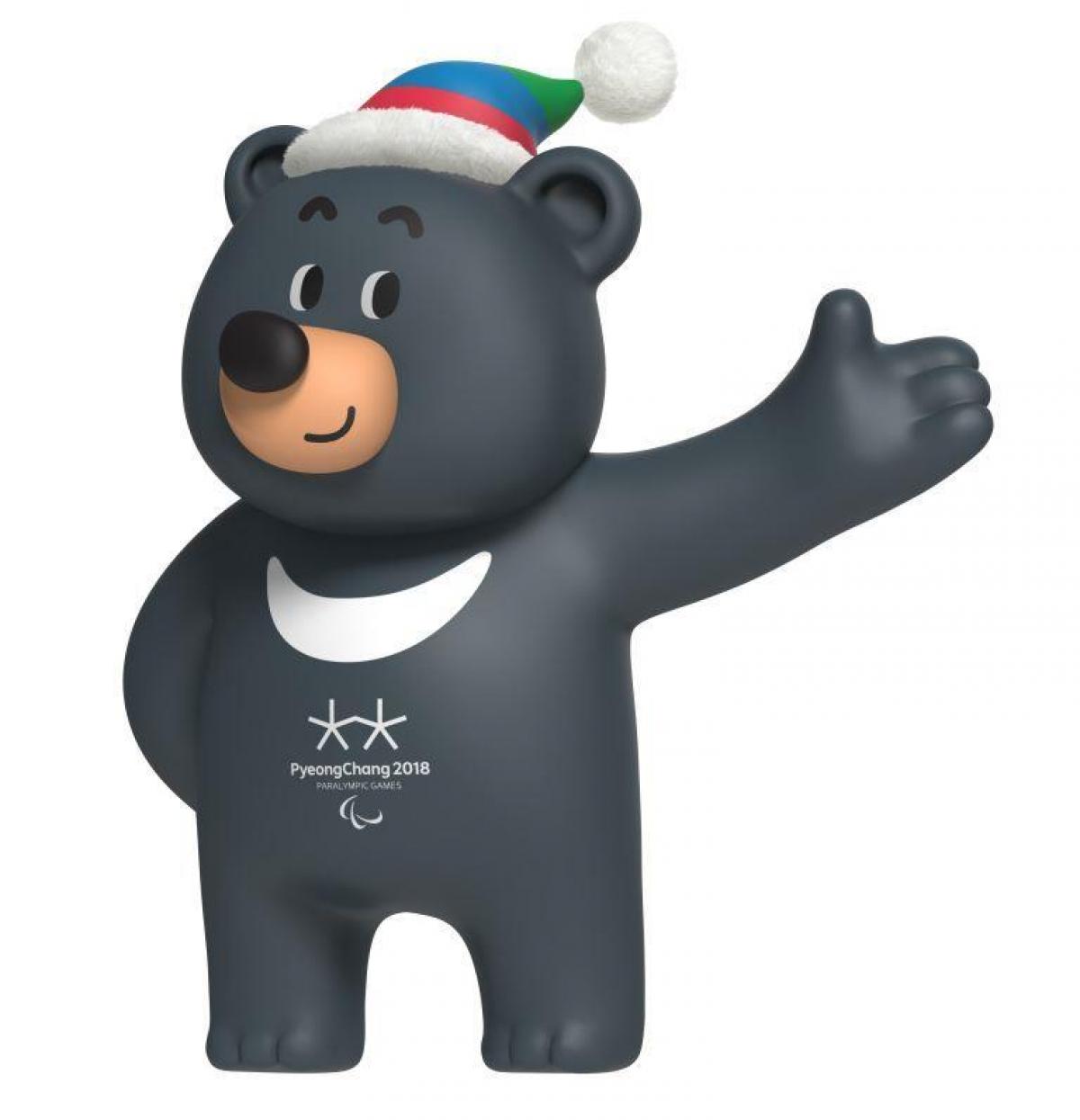Meet Bandabi, the PyeongChang 2018 Winter Paralympic Mascot
An Asiatic black bear named “Bandabi” and a white tiger named “Soohorang” were selected to represent the Paralympic and Olympic Winter Games in PyeongChang. Both animals appear in South Korea’s foundation mythology and are closely associated with Korean culture and folklore.
In the name “Bandabi,” “banda” comes from “bandal” which means “half-moon”, indicating the white crescent on the chest of the Asiatic Black Bear, and “bi” carries the meaning of celebrating the Games. In addition to the cultural importance it carries, Bandabi is a nod to the 1988 Seoul Paralympic Summer Games mascots, the Gomdoori, as they are Asiatic black bears just like Bandabi. The bear is symbolic of strong will, courage, perseverance and patience. The Asiatic Black Bear is also the symbol animal of Gangwon Province, where PyeongChang is located. Bandabi embodies the combination of these values and symbolism with his warm personality and cheers for the athletes while championing harmony and equality.
Get to Know the Design Team Behind Bandabi
The official mascots for the 2018 Olympic and Paralympic Winter Games were launched on 2 June 2016. Bandabi and Soohorang were chosen through a mascot selection contest and were created by Mass C&G, a design company from Seoul.

 Facebook
Facebook
 Instagram
Instagram
 Twitter
Twitter
 Youtube
Youtube
 TikTok
TikTok
 Newsletter Subscribe
Newsletter Subscribe
